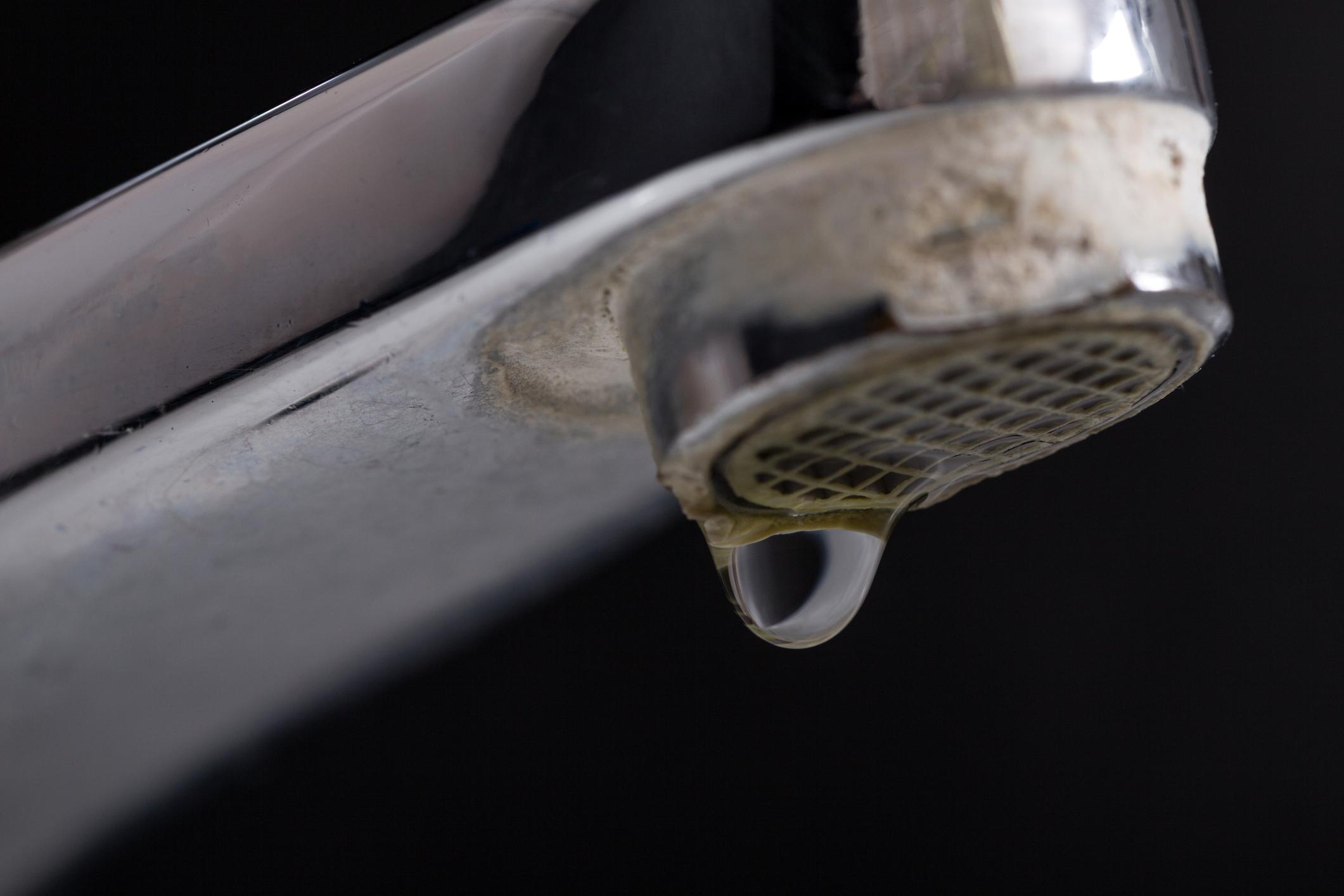

Let’s settle your fears right now: hard water is not bad for your well-being. In fact, some people prefer to drink water with all the minerals hard water provides, like calcium and magnesium.
However, hard water can make your life more difficult by:
- Causing limescale buildup in pipes, eventually leading to blockages.
- Causing limescale buildup in appliances like kettles, making them less efficient and more prone to breakdown.
- Making it harder to work up a lather with soap, so you have to use more soap to reach the same level of cleanliness.
- Staining surfaces in your kitchen and bathroom, as well as clothes and upholstery.
- Leaving spots on glassware, mirrors and dishes after washing, making cleaning feel like an uphill task.
- Increasing the cost of living by making appliances like water heaters less efficient.
- Some people also dislike the taste of hard water, leading them to try a drinking water filter tap or other solutions.
In this guide to the side effects of hard water, we will also discover the difference between hard and soft water, how to tell if your tap water is hard or soft, and how you can solve the issues hard water presents.
Hard vs soft water: what’s the difference?
You might have already guessed the difference between hard vs soft water, but here’s a refresher:
- Hard water contains higher concentrations of minerals, especially calcium and magnesium. It contributes to the issue of limescale in your home, and can make everyday appliances like water heaters and boilers more costly to run and more likely to break down.
- Soft water contains higher levels of salt, but is still safe to drink. While some areas have natural soft water, most households in the UK will need a water softener to reduce the concentrations of calcium and magnesium in their tap water.
Do you have hard water in your home?
While hard water can present as cloudy tap water when it’s fresh from the tap, in most cases you can’t visibly tell if water is hard or soft. However, there are usually signs if you’re located in a hard water area.
- Limescale build-up inside your kettle – this is a white, sometimes chalky substance that builds up on the bottom of your kettle over time.
- White spots on glasses and dishes even after they’ve been washed. Limescale may also be present on glass shower doors, taps and surfaces throughout your kitchen and bathroom.
- Harder to work up a soapy lather – if you have hard water, you’re more likely to work up a sort of ‘soap scum’ instead, which makes it harder to wash.
- Low water pressure – limescale can eventually cause blockages and other issues with your plumbing, leading your taps to eventually stop working.
On the other hand, if you don’t see any limescale buildup on your surfaces or appliances and find it easy to wash with soap, you probably have soft water.
Our water hardness checker can help you understand if hard water is making your life more difficult.
What are the side effects of drinking and using hard water?
With the above in mind, what hard water side effects should you be aware of?
Health risks of drinking hard water
There are no serious well-being issues associated with drinking hard water. In fact, it can probably help you ingest your recommended daily intake of healthy minerals.
Harder time cleaning
Some people report a film or odd feeling after washing their hands with hard water, most likely as a result of the limescale scum that forms instead of a lather. However, this is unlikely to harm you.
While your wellbeing won’t be affected, the staining and build-up of limescale can be a constant issue, and difficult to remove with more hard water. It’s a constant task to clean limescale from taps and inside kettles, showers and toilets.
This is why many people prefer using a water softener to lower the amount of soap they have to use – and make cleaning more effective. Working up more lather also means you use fewer abrasive products on your skin, leaving you feeling squeaky clean.
Higher overall budget costs
Limescale stains and residue isn’t just an annoyance. It’s also a drain on your finances. According to British Water, you lose 12% in heating efficiency for every 1.6mm of scale built in your heating system. Over time, limescale can:
- Force you to buy new appliances, like faucets, washing machines, and kettles due to lowered lifespan and efficiency.
- Ensure it costs more to maintain your appliances, with more replacement of certain parts and more soap necessary to keep everything clean.
- Cost more in heating and electricity due to limescale in heating systems and boilers.
People who use water softeners find they save up to £550 per year, use 4x less cleaning products, and save between 20% to 64% on household energy bills. This is thanks to increased efficiency for all water-dependent appliances, like water heaters.
How can you soften hard water?
If you want to avoid all the headaches and side effects associated with hard water, you can use a water softener to remove the minerals from the water. A water softening system works like this:
- Your water softener system is full of microscopic resin beads, each carrying a negative charge.
- Hard water enters your water softener system from the source (typically your water mains.)
- The positively charged calcium and magnesium in your hard water are attracted to the negatively charged resin beads in your softener.
- An ion exchange takes place, removing the magnesium and calcium from your water supply. All the minerals stick to the resin beads, separating from your tap water.
- Soft water exits your water softener and travels where you need it to go – whether that’s your sink, toilet or shower.
- Water softener salt, which is mostly made of pure sodium, detaches the minerals from the resin beads in a process called regeneration. This means the resin beads can be used again to produce soft water.
As we’ll discuss, producing soft water is just one of the many benefits of using a water softener.
The benefits of soft water
Soft water isn’t just an efficient way to combat hard water. It comes with its own convenience and enjoyment, too. For example:
- Soft water leaves you feeling happy and squeaky clean after every shower, thanks to improved soap efficiency.
- It makes cleaning faster, too, with no more chalky limescale stains to deal with.
- Your appliances last longer and work better – especially your boiler, water heating systems, and kettle.
- Some people enjoy the taste of their food and drinks more after cooking with soft water.
What’s more, you’ll be able to enjoy your time back when you’re not constantly dealing with – and spending money on – limescale.
Is it safe to drink soft water?
Some people worry that the salt in softened water makes it bad for your wellbeing, but you can rest assured that soft water is safe to drink for most people. Salt concentrations in softened water are fairly low, and would likely only be harmful in rare cases of extreme sodium sensitivity.
However, if you want to keep drinking hard water and simply use soft water for cleaning, you can install a water softener in connection with a drinking water tap or reverse osmosis system. This gives you the option to use either type of water when the situation calls for it.
Don’t live with hard water in your home
If you’re tired of living with hard water stains and costly heating bills, consider a water softener. Not only will you enjoy sparkling clean bathrooms and kitchen surfaces, but you’ll also save money in the long run on cleaning supplies, appliances, maintenance and bills.
If you want to keep enjoying the mineral-rich option that drinking hard water provides, while still banishing limescale, you have options. For example, a combination of a water softener and water filter system will allow you to enjoy the best of both soft and hard water.


